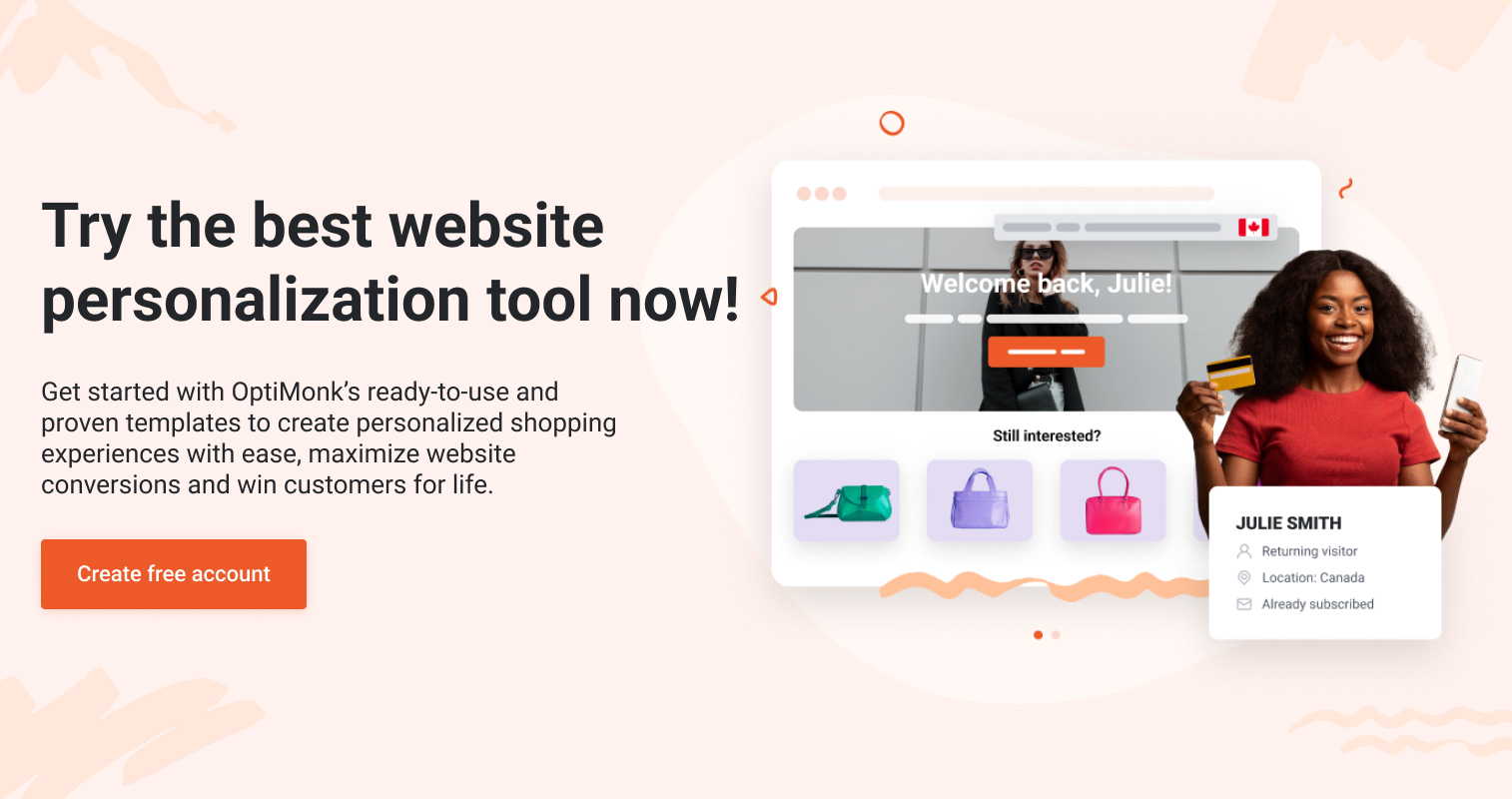- Blog
- 13 Website Personalization Examples That Are Guaranteed to Boost Your Results
13 Website Personalization Examples That Are Guaranteed to Boost Your Results
-
Nikolett Lorincz
- Personalization
- 6 min read
Table of Contents
Let’s cut right to the chase: one-size-fits-all messaging doesn’t work anymore. Customers expect online stores to create personalized experiences that are tailored to their interests.
Nobody wants to spend lots of time browsing through a website to find what they need, so ecommerce stores need to find ways to deliver relevant content directly to them.
To do that, you’re going to need website personalization. By taking full advantage of customer data and user behavior to provide personalized content, you can increase conversions and boost sales while improving the user experience.
To help you get started with website personalization, we’ll walk you through 13 great personalization website examples you can learn from. And if you think that one (or a few) of them could work on your site, you can implement them today!
Let’s get right into it!
What is website personalization?
Website personalization is the process of creating a customer journey that responds to the unique needs and interests of each and every visitor as an individual.
It’s about understanding that no two website visitors are alike and creating messages that target users based on what makes them different.
Some examples of website personalization are:
- Relevant recommendations: If you collect data about what types of products a site visitor usually browses, you can recommend products that are either similar to those products or that complement them.
- Personalized CTAs: You can tailor your CTAs to different audience segments, like creating different calls to action for the B2B and B2C sides of an ecommerce website.
- Custom landing pages: You can boost engagement by creating landing pages for different segments. For example, you might create a different landing page for new vs. returning visitors.
- Relevant offers: Tailoring discount offers to different segments can help boost conversions because your personalization efforts will make people feel like the offer is made for them.
Types of website personalization
There are two main types of website personalization:
1. Dynamic content
Dynamic web personalization involves changing the native (base) content of the website. For example, you can personalize the customer experience by adapting a headline to appeal to the interests of a certain segment of visitors or embedding an extra offer for another segment.
Dynamic content provides the least intrusive type of personalized experience, since visitors will simply browse the site and digest the personalized content as they go, without necessarily even noticing that they’re seeing personalized content.
2. Overlays
Overlays appear on top of the background content and conceal some parts of it. The most common types of overlays are popups and sticky bars.
They’re usually more intrusive (since they appear automatically), but they’re also easier to notice and have much better conversion rates than embedded forms of personalization.
Getting the most out of your website personalization efforts will require using both types of messages.
13 website personalization examples to inspire you
Improving customer engagement and customer retention are key outcomes of effective website personalization.
By exploring various personalization strategies, this section will showcase how the best ecommerce companies achieve these outcomes.
Here’s a look at some fantastic website personalization examples that are on the cutting edge of ecommerce. Hopefully you can find some personalization ideas for your own site on this list!
1. Amazon
Amazon is universally seen as the king of website personalization, with a homepage that’s full of personalized recommendations and content.
Nearly everyone has an Amazon account, and the company uses all the information they have on every existing customer. On the homepage, they use customer-specific personalization based on name and address.
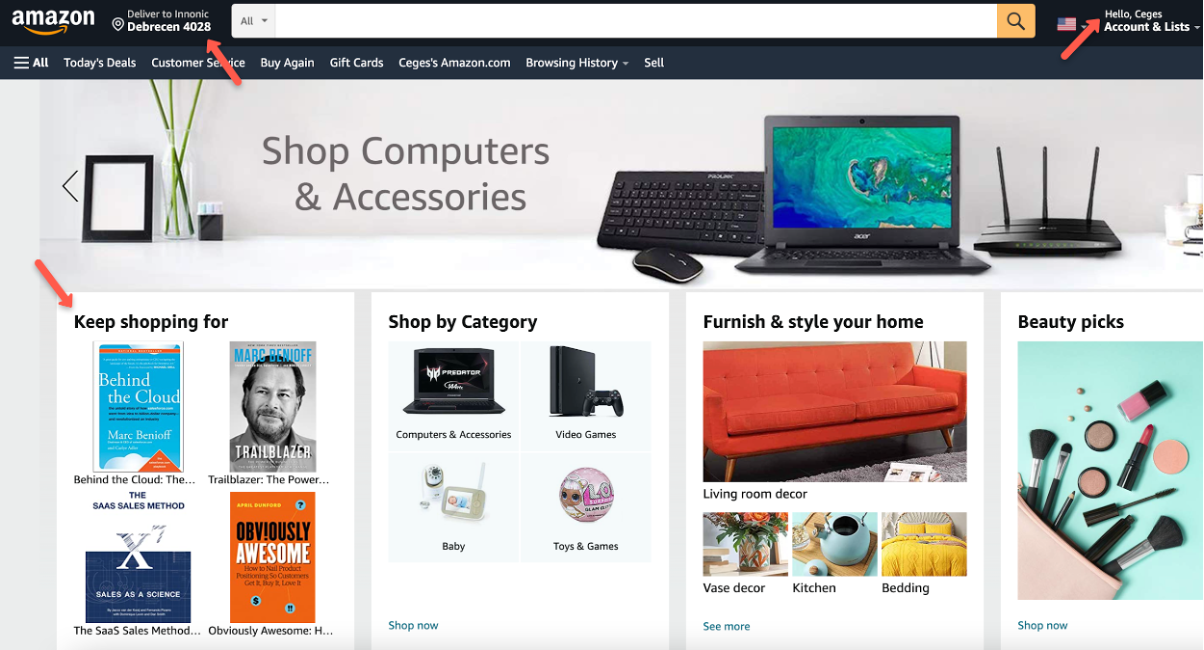
Their product recommendations are based on browsing behavior and previous purchases. This ensures that each visitor’s specific interests are reflected in the recommendations they see.
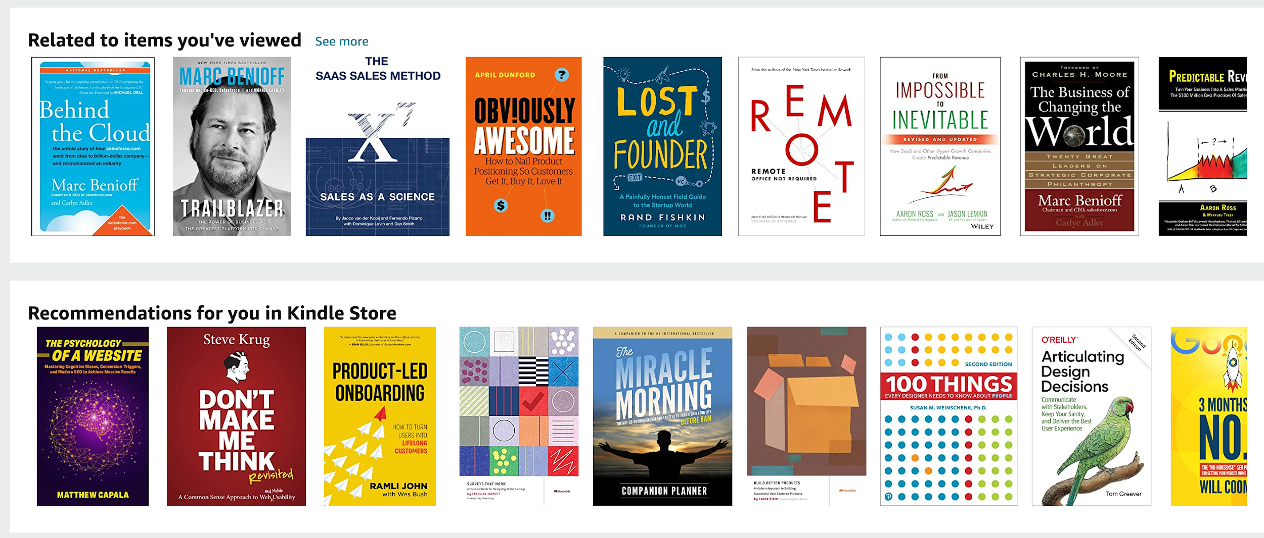
2. Glossier
As mentioned above, differentiating between new customers and returning customers is a popular website personalization strategy.
Glossier uses this type of web personalization to display tailored messages on their landing pages using a sticky bar. For new visitors, they display a 10% discount code on first purchases.
This simple, effective strategy shows that personalization doesn’t have to be complicated!
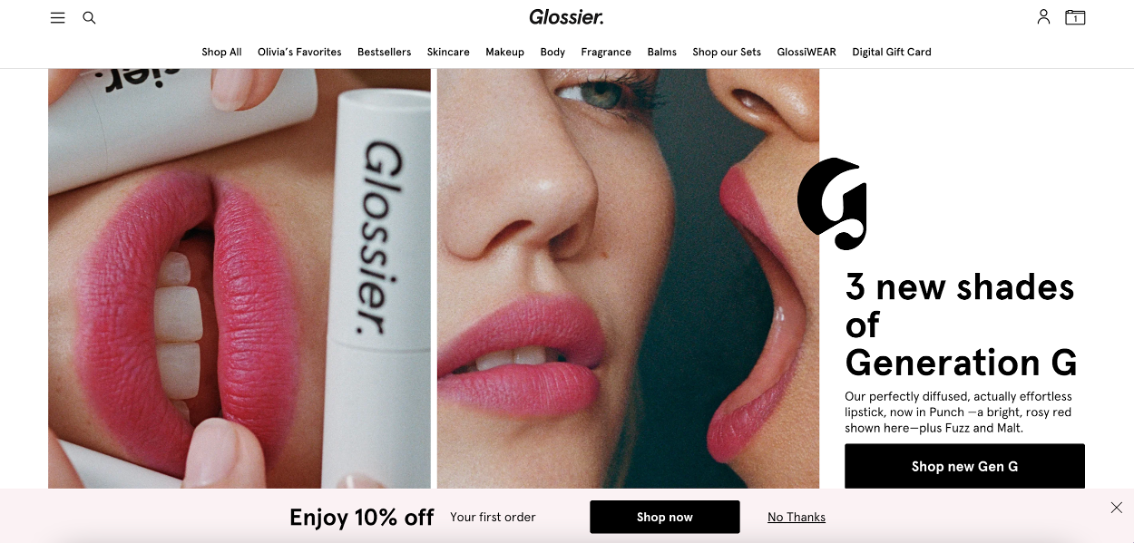
Recommended reading: Glossier Marketing Breakdown: How This Beauty Brand Became a $1.2 Billion Company
3. Sephora
Sephora takes their product recommendations a step further by comparing products that are similar to the one you’re looking at.
This personalized customer experience makes the purchasing decision easier.
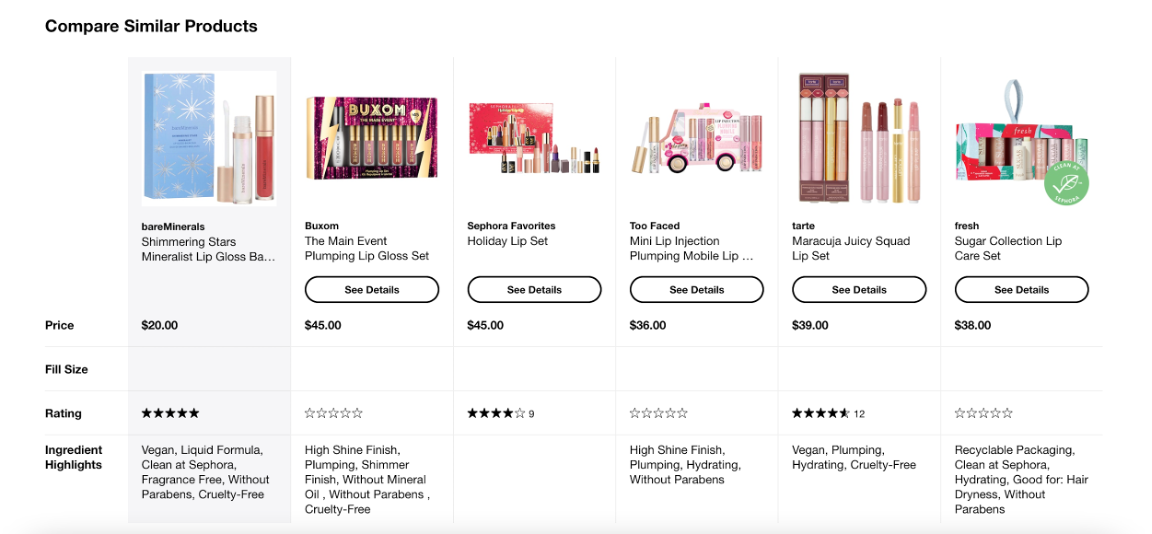
4. Best Buy
Best Buy is another large company that’s invested in great ecommerce personalization.
They have “recommended for you” and “continue shopping” sections on the homepage, which help their online visitors find the products they’re interested in quickly.
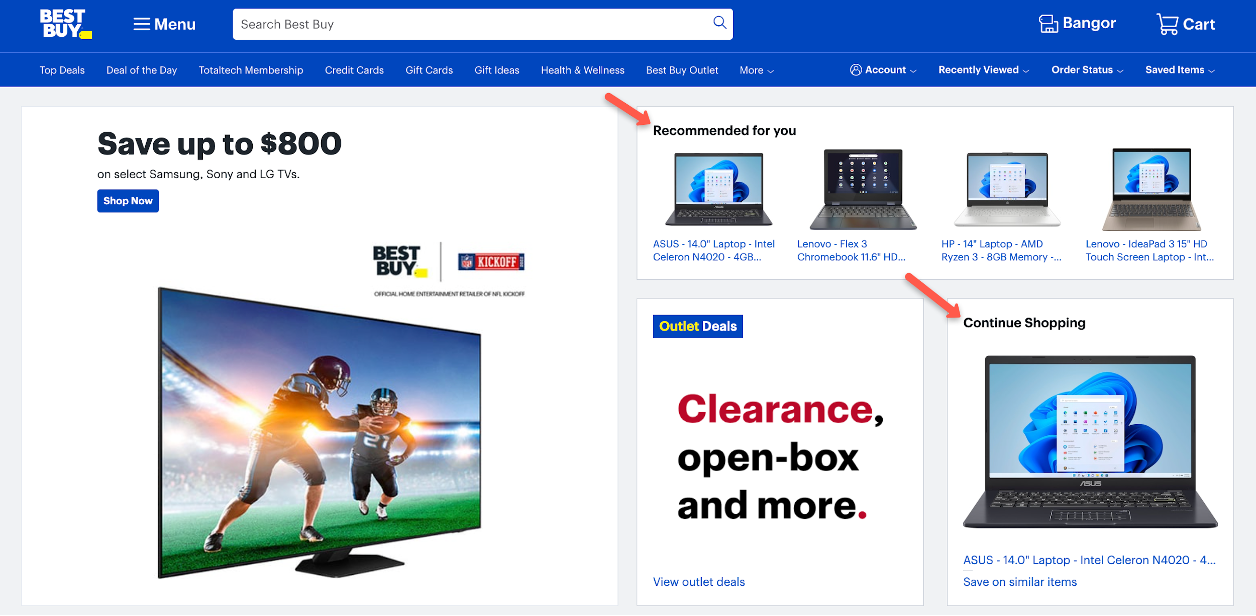
5. Macy’s
Personalizing messages based on location data is another popular website personalization strategy.
Macy’s uses a popup to tell visitors from a specific location that they ship to their country.
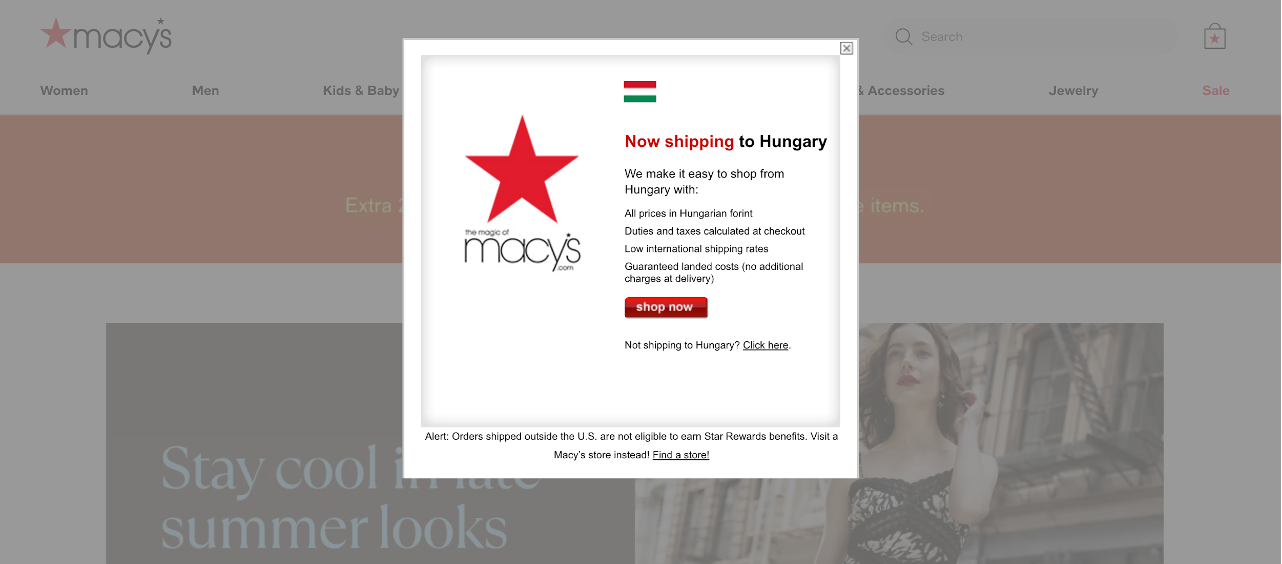
However, Macy’s personalization doesn’t end there. They also personalize their product page with currency information, recommended sizing, and product recommendations.
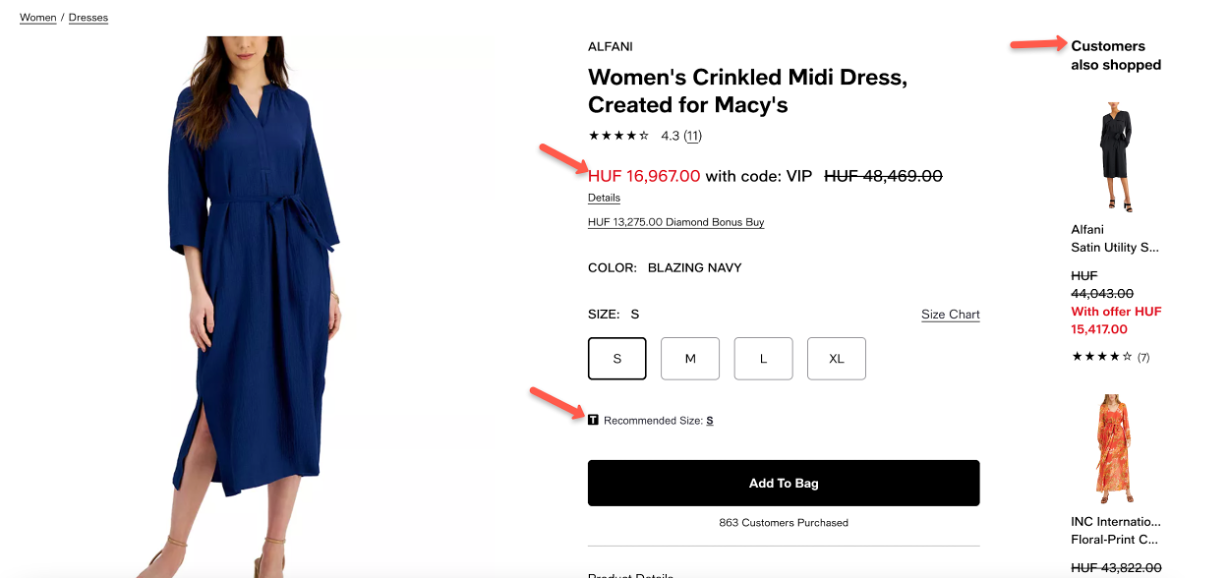
6. Etsy
Etsy shows product recommendations based on each visitor’s behavior while browsing. Reminding users about products that they’ve recently shown interest in is a great way to generate more sales.
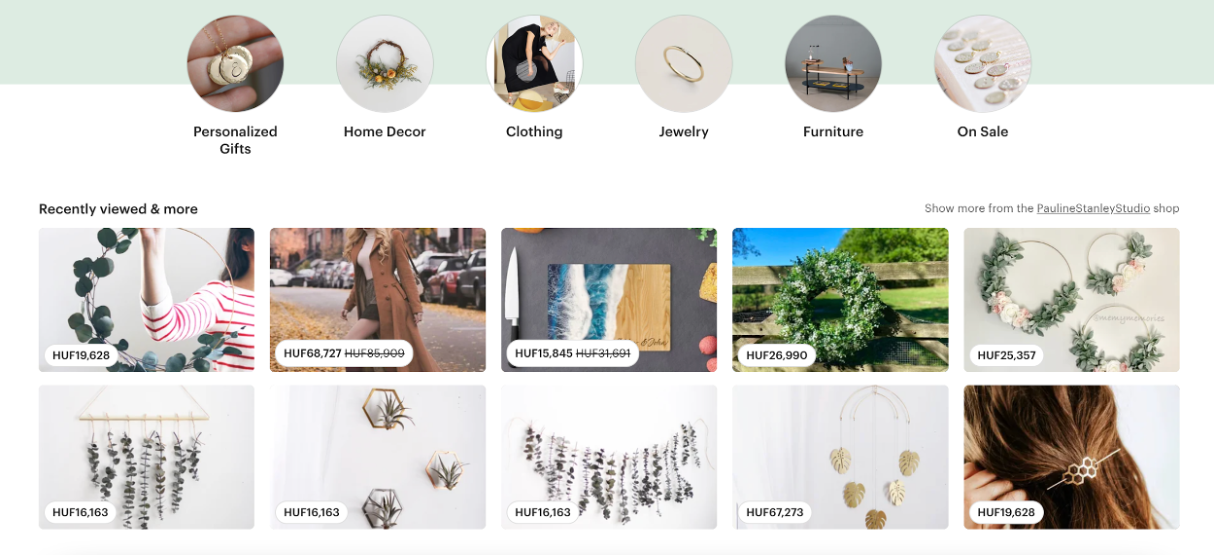
7. Taza Chocolate
Taza Chocolate uses a dynamic free shipping message to personalize the customer experience. This ecommerce personalization tactic starts off by prominently displaying the amount of money a customer has to spend to qualify for free shipping.
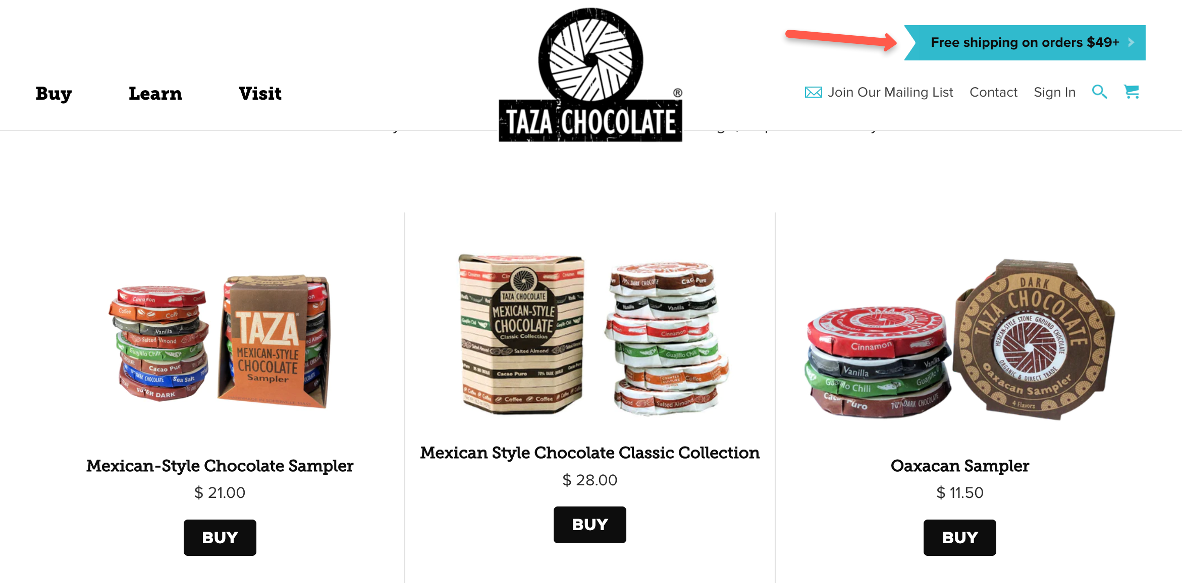
When a customer adds an item to their cart, the message updates to tell them how much more they need to spend to get free shipping. Everyone loves free shipping, and this strategy encourages customers to add additional items to their cart to reach the threshold.
Dynamic free shipping bars are one of the best ways to boost average order values in your store.

Finally, when a customer has added enough value to their cart, they see a message informing them that they qualify for free shipping.
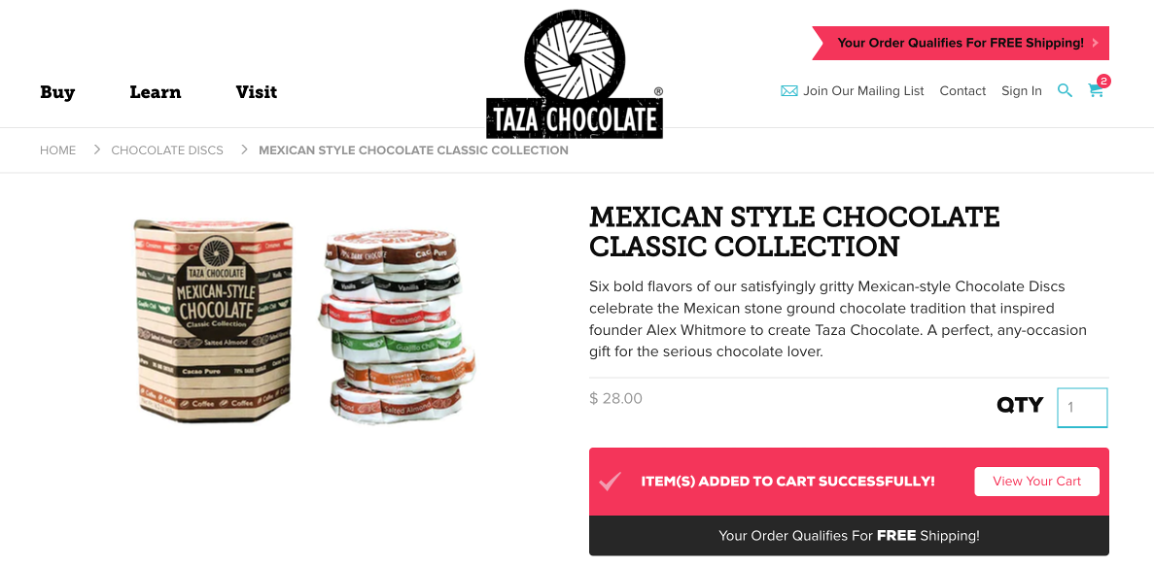
8. Booking
Booking.com welcomes returning visitors with a message that engages with them on a personal level.
Notice that the goal of this message is to get users to sign into their account, which helps booking.com collect even more data to provide personalized offers and experiences.
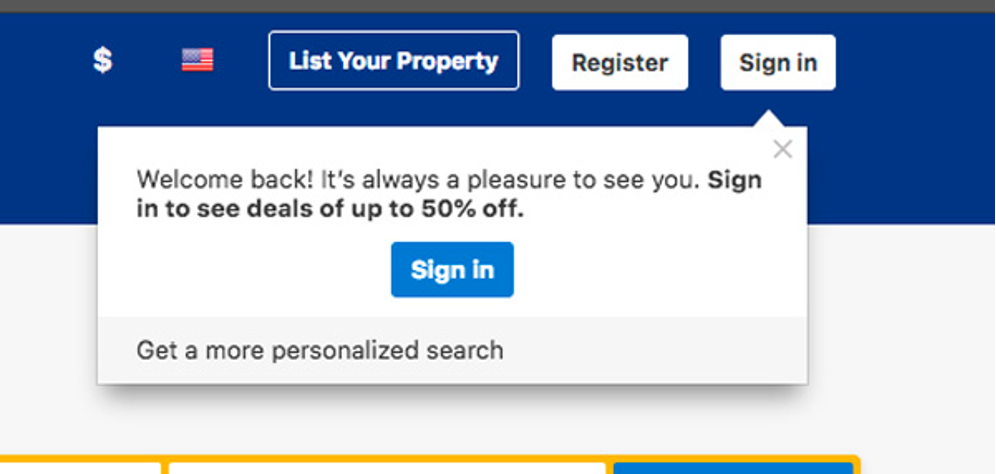
9. Christopher Cloos
If you have different versions of your website for different locations, you could use a popup like Christopher Cloos to allow users to choose which version they want to browse.
This website personalization example shows the importance of collecting data from your customers. A personalized web experience is only as good as its data sources and, most often, the best source of data is your customers!
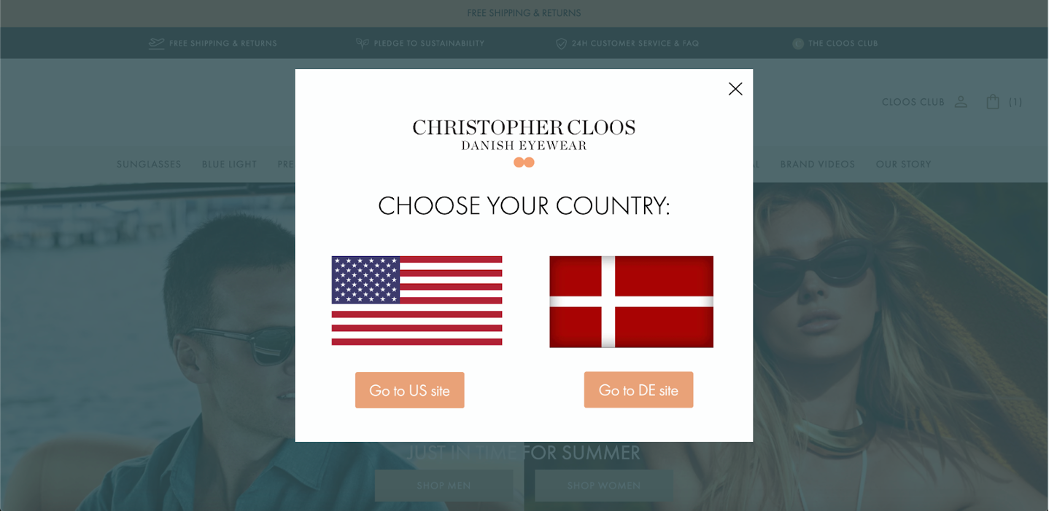
10. BlendJet
BlendJet personalizes content based on the traffic source visitors arrive from. This is a smart move because visitors who come from different sources can have quite different interests and characteristics.
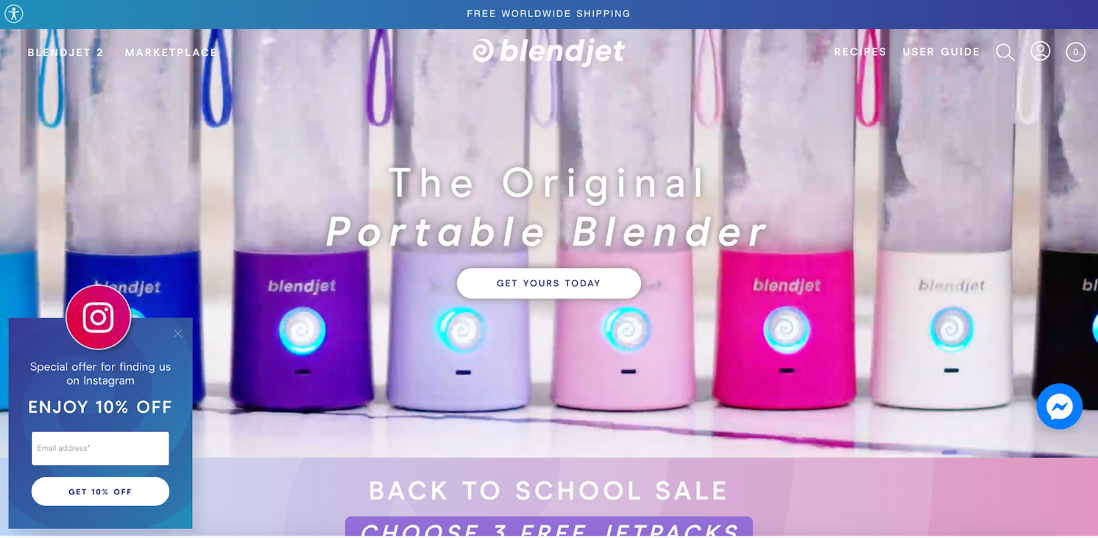
11. OliveOilLovers
OliveOilLovers uses a personalized popup that displays a discount code that’s applied directly to the specific products they’ve added to their cart.
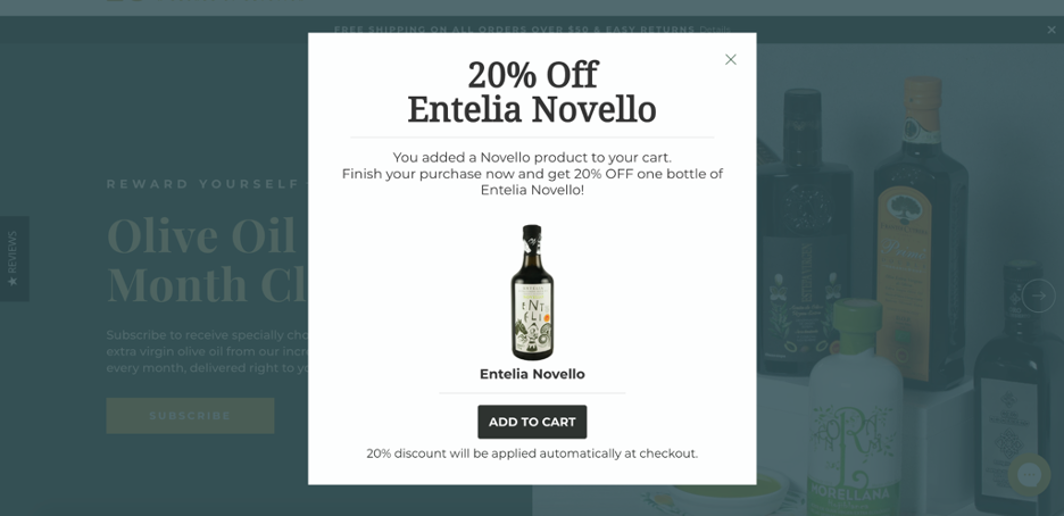
12. Lunya
Lunya also displays a personalized popup based on the visitors’ location. This type of personalization helps customers start browsing the site with one less lingering question about shipping!
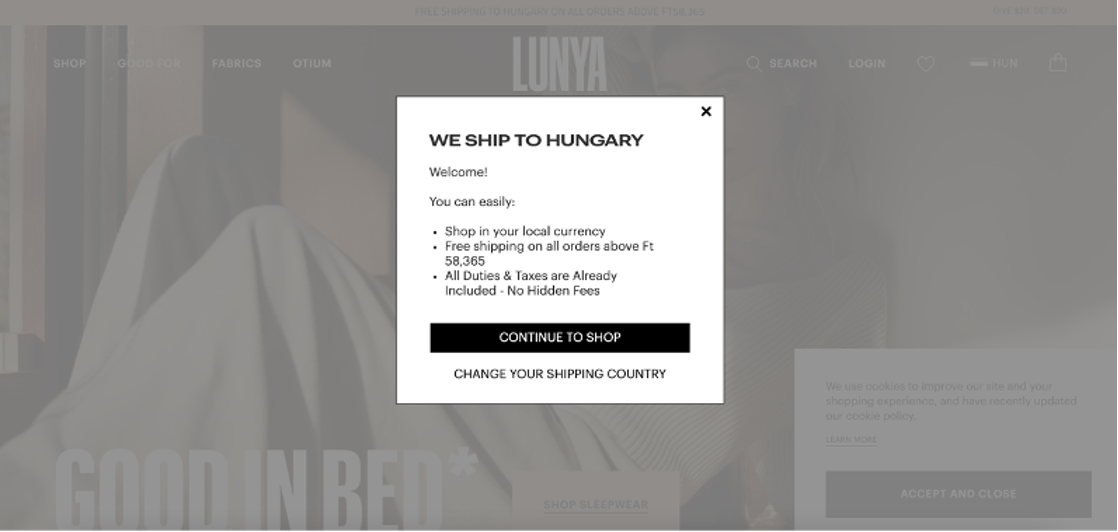
13. ASOS
ASOS places a small message with a discount code for new visitors directly into the product pages. This ensures that the discount is at the top of their mind as they’re looking at products.
Plus, they also have recommended sizes for different items based on what a customer has bought in the past.
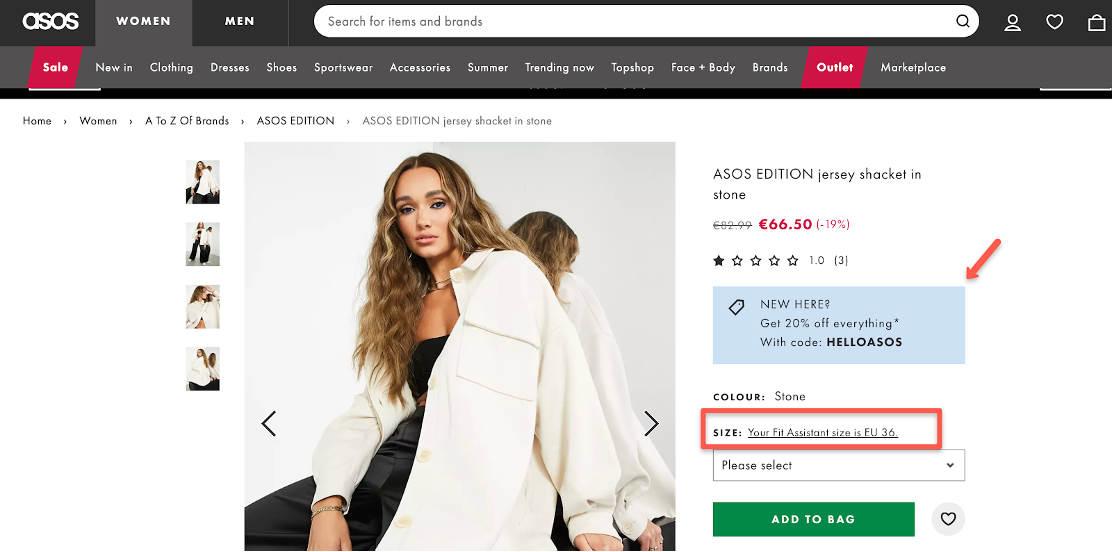
FAQ
Why is website personalization important?
Website personalization is crucial for improving the customer journey, increasing engagement, and boosting conversion rates. By delivering relevant content and personalized customer experiences to users based on their interests, site behavior, and personal preferences, you can improve customer satisfaction.
Can website personalization be implemented on a small budget?
Yes, website personalization can be implemented on a small budget, especially with the availability of affordable web personalization tools and platforms designed for businesses of all sizes. OptiMonk is one such tool that offers a free plan for small websites. Additionally, you can start with simple personalization techniques, such as personalized recommendations or basic website content customization, before scaling up your efforts as your budget allows.
What types of customer data are most valuable for website personalization?
The types of customer data most valuable for website personalization vary depending on the business and its specific goals, but some common types include:
- Demographic information: This includes data such as age, gender, location data, income level, and occupation, which can help personalize content and offers to match the preferences of different demographic groups.
- Behavioral data: This tracks how users interact with your website, including pages visited, products viewed, search queries, time spent on site, and click-through rates. This information provides insights into user interests and intent, allowing for more targeted and relevant personalization.
- Purchase history: Understanding a customer’s past purchases allows businesses to recommend related products or offer personalized promotions based on their purchasing patterns and preferences.
- Preferences and interests: Data on user preferences and interests, gathered through well-thought-through survey questions preference centers, or past interactions, enables businesses to tailor content, recommendations, and messaging to align with individual tastes and preferences.
- Browsing device and contextual data: Knowing whether a user is accessing your website from a desktop, mobile device, or tablet, as well as their location, time of day, and referral source, can help personalize the user experience to suit their device and context.
- Social media data: Integrating data from social media platforms can provide additional insights into user behavior, interests, and social connections, allowing for more targeted and relevant personalization.
Wrapping up
Website personalization is an increasingly important part of the ecommerce industry. It allows ecommerce stores to deliver tailored content, relevant offers, and on-point recommendations. All that adds up to happier customers!
Personalized marketing campaigns are crucial for leveraging website personalization to its fullest potential.
Hopefully this list of 13 real-world examples of website personalization has given you plenty of inspiration for your own store.
If you’re ready to start personalizing your website, check out OptiMonk’s web personalization software. It’s free to use and you can set up personalized content in just a few minutes!
Learn more
Would you like to learn more about website personalization? Check out these articles:
Migration has never been easier
We made switching a no-brainer with our free, white-glove onboarding service so you can get started in the blink of an eye.

What should you do next?
Thanks for reading till the end. Here are 4 ways we can help you grow your business:
Boost conversions with proven use cases
Explore our Use Case Library, filled with actionable personalization examples and step-by-step guides to unlock your website's full potential. Check out Use Case Library
Create a free OptiMonk account
Create a free OptiMonk account and easily get started with popups and conversion rate optimization. Get OptiMonk free
Get advice from a CRO expert
Schedule a personalized discovery call with one of our experts to explore how OptiMonk can help you grow your business. Book a demo
Join our weekly newsletter
Real CRO insights & marketing tips. No fluff. Straight to your inbox. Subscribe now
Nikolett Lorincz
- Posted in
- Personalization
Partner with us
- © OptiMonk. All rights reserved!
- Terms of Use
- Privacy Policy
- Cookie Policy
Product updates: January Release 2025









